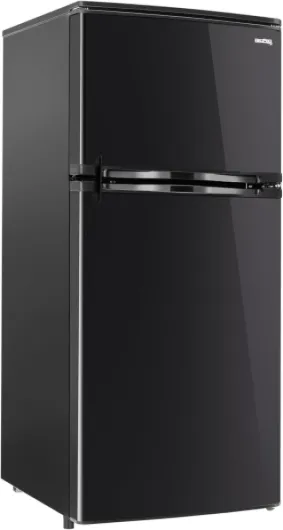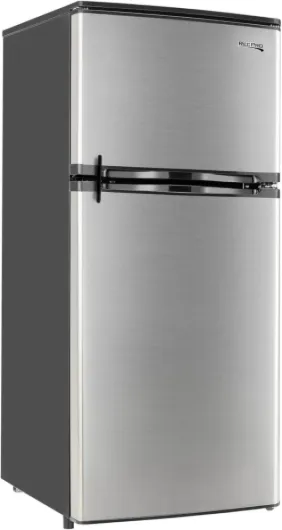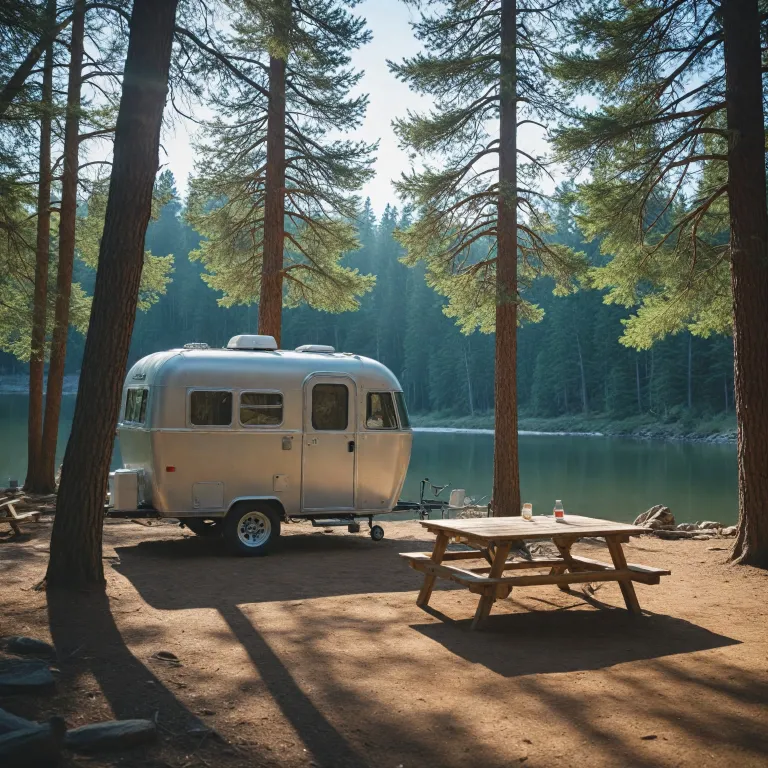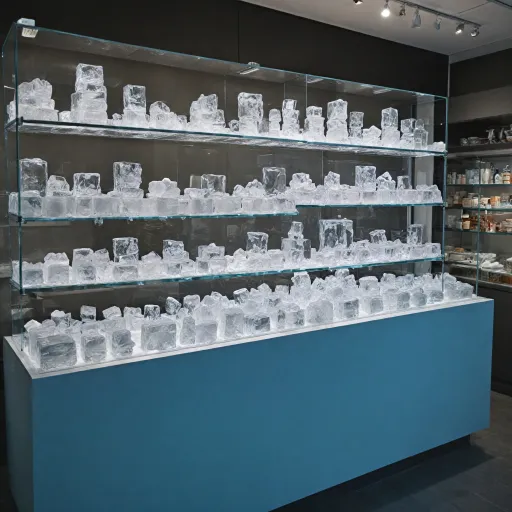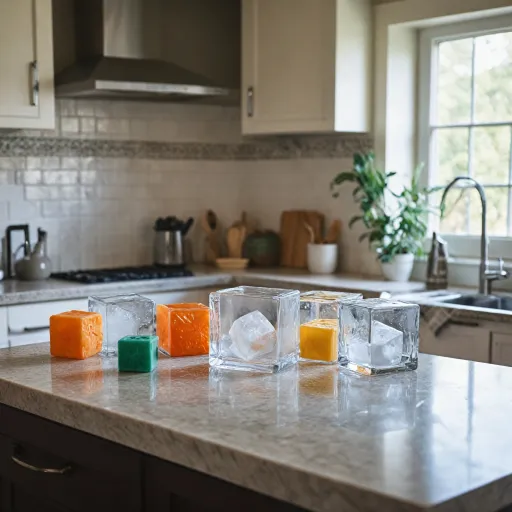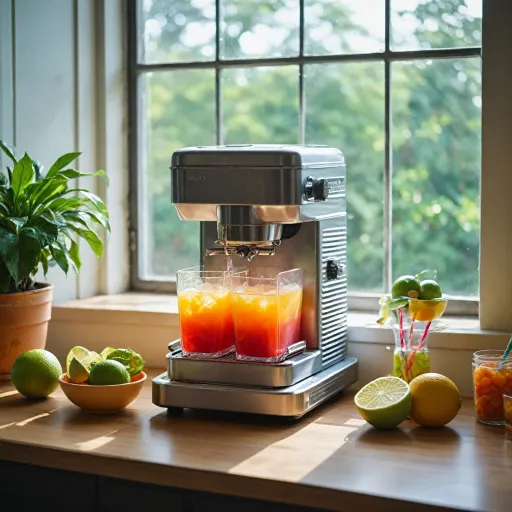
Understanding the different types of camper trailer refrigerators
Comparing Popular Cooling Technologies
When searching for the right camper trailer refrigerator, understanding the main types available is essential. Each type uses a different cooling technology, which impacts how well it keeps food fresh, how much power it uses, and how it fits into your adventure lifestyle. Here’s a look at the most common options:
- Absorption Refrigerators: These are classic choices for many RV owners. They can run on propane, 120V shore power, or 12V battery power. Brands like Dometic and Norcold offer models in various cubic feet sizes, often in black or stainless steel finishes. Absorption refrigerators are quiet and versatile, but they may struggle in very hot climates and need to be level to operate efficiently.
- Compressor Refrigerators: These work much like your home fridge, using a compressor to cool. They’re more efficient on battery power and perform well even in high temperatures. Compressor refrigerators, including electric coolers and portable fridge/freezer models, are ideal for off-grid use with a battery bank or solar. Furrion Arctic and Dometic refrigerator models are popular in this category, offering options from compact cubic foot sizes to larger units for extended trips.
- Thermoelectric Coolers: These are lightweight and affordable, but best for short trips or as a backup. They use 12V power and are more like electric coolers than true refrigerators. They don’t keep food as cold as absorption or compressor types, so they’re not ideal for long-term food storage.
Matching Refrigerator Type to Your Needs
Choosing between these types depends on your travel style, power sources, and how much stock you plan to keep. For example, if you camp off-grid and rely on a battery bank, a compressor refrigerator or electric cooler is a smart pick. If you often have access to propane or shore power, an absorption refrigerator offers flexibility. Consider the cubic feet capacity, whether you need a compact fridge for quick trips or a larger model to keep food for the whole family.
Other factors like installation, item cart compatibility, and whether you want features like stainless steel finishes or black feet can also influence your decision. For more details on how the right ice mold can enhance your refrigerator’s performance, check out this guide on choosing the right mold for block ice.
Key features to consider when buying a camper trailer refrigerator
What Matters Most When Picking Your Camper Trailer Refrigerator
When you’re shopping for a camper trailer refrigerator, it’s easy to get overwhelmed by all the options. From absorption refrigerators to compressor refrigerators, each model has its own strengths. Here’s what to focus on so you can keep food fresh and your adventures stress-free.
- Capacity and Size: Think about how much food and drink you need to stock. Refrigerator cubic feet is a key measurement—common sizes range from compact 2 cubic foot units to larger 8 cubic feet black or stainless steel models. Make sure the fridge fits your trailer’s space and your storage needs.
- Power Source: Camper refrigerators can run on propane, battery power, shore power, or a combination. Dometic and Norcold offer absorption refrigerators that switch between propane and electric, while compressor refrigerators (like the Furrion Arctic or electric cooler models) run efficiently on 12 volt refrigerator systems or a battery bank. Consider your typical camping style—off-grid or full hookups—when choosing.
- Energy Efficiency: Efficient models help you save battery power and propane, especially important for longer trips. Compressor refrigerators are generally more efficient on battery, while absorption types are versatile but can use more energy over time.
- Build Quality and Finish: Look for durable materials like stainless steel for longevity and easy cleaning. Some models offer black finishes to match your trailer’s interior. Check the door seals and hinges for a solid feel.
- Features and Controls: Adjustable shelves, digital temperature controls, and reversible doors add convenience. Some fridges include freezer compartments or dual zones for better food organization. View the control panel for user-friendly settings.
- Brand and Support: Established brands like Dometic, Norcold, and Furrion provide reliable support and a wide range of replacement parts. Check if the model you’re considering is easy to add to your cart and if item cart availability is good for future needs.
For a practical guide on finding the best refrigerator suppliers and service near you, check out this practical guide for buyers. It’s a helpful resource when you’re ready to view options or need support for your fridge or water heaters.
Remember, the right camper trailer refrigerator will keep food safe, drinks cold, and your adventures running smoothly—whether you’re plugged into shore power or relying on your battery bank. Take your time to compare models and features before you add to cart.
Installation tips for camper trailer refrigerators
Preparing Your Space for a New Refrigerator
Before installing a camper trailer refrigerator, measure the available space carefully. Check the cubic feet and dimensions of your chosen model, whether it’s a Dometic, Norcold, or Furrion Arctic. Make sure there’s enough clearance for ventilation, especially for compressor refrigerators and absorption refrigerators. Proper airflow helps keep food at the right temperature and extends the life of your fridge.Power Connections and Requirements
Most camper refrigerators run on multiple power sources: propane, shore power, battery, or 12-volt. Review your trailer’s power setup and battery bank. Compressor refrigerator models often need a stable electric supply, while absorption refrigerators can switch between propane and electric. Always check the manufacturer’s guide for wiring and fuse recommendations. If you’re using a 12-volt refrigerator, confirm your battery power can handle the load over time.Securing and Leveling the Fridge
A refrigerator must be securely mounted to prevent movement during travel. Use the brackets or mounting hardware included with your item. Leveling is especially important for absorption refrigerators, as they rely on gravity for coolant flow. Use a small level tool to check both sides before finalizing installation. This step helps maintain efficiency and prevents cooling issues.Ventilation and Exhaust Considerations
Proper ventilation is crucial for both safety and performance. For propane-powered models, ensure the exhaust vent is clear and directed outside. Stainless steel or black vent covers can help protect the system from debris. Compressor refrigerators also benefit from good airflow, especially in tight spaces. Check the manufacturer’s view on vent placement for your specific model.Testing and Stocking Your Refrigerator
Once installed, power up the fridge and let it cool for several hours before adding food. Monitor the temperature and check for any error codes. Stock the refrigerator gradually, allowing air to circulate. For more tips on keeping your fridge running efficiently and making the most of your ice maker, check out the art of perfectly chipped ice.- Confirm cubic foot capacity matches your needs
- Double-check all power and propane connections
- Secure the fridge to prevent shifting
- Allow time for the refrigerator to reach optimal temperature
How to maximize efficiency and performance
Smart Power Management for Your Refrigerator
Efficient power use is essential for any camper trailer refrigerator, whether you rely on a Dometic, Norcold, or Furrion Arctic model. Compressor refrigerators and absorption refrigerators have different energy needs. If you use battery power, make sure your battery bank is sized to handle your fridge’s draw, especially if you plan to run a volt refrigerator or electric cooler for extended periods. When shore power is available, switch to it to save your battery. Propane-powered models offer another way to keep food cold without draining your battery.Organizing Your Fridge for Maximum Storage
How you stock your refrigerator can impact its performance. Avoid overfilling, as this restricts airflow and makes it harder for the fridge to maintain a consistent temperature. Use bins or dividers to separate items and allow cold air to circulate. For models with adjustable shelves, customize the layout to fit your needs, whether you have a 3 cubic foot fridge or a larger 8 cubic feet black stainless steel unit.Temperature Settings and Monitoring
Set your refrigerator to the recommended temperature for safe food storage. Many Dometic refrigerator and Norcold models have digital displays, making it easy to view and adjust settings. Use a fridge thermometer to double-check the internal temperature, especially in hot weather or when running on battery or propane. This helps keep food safe and prevents spoilage.Pre-Cooling and Loading Tips
Pre-cool your fridge before loading it with food. Plug it into shore power or start it on propane several hours before your trip. When adding groceries, make sure items are already cold if possible. This reduces the time refrigerator needs to reach optimal temperature and saves energy.Regular Defrosting and Cleaning
Ice buildup can reduce efficiency, especially in absorption refrigerators. Defrost regularly and wipe down the interior with a mild cleaner. Stainless steel finishes are easy to clean and help maintain a fresh environment for your food. Check the seals on the door to ensure they’re tight, preventing cold air from escaping.- Monitor your battery bank if using battery power
- Switch to shore power or propane when possible
- Organize items to allow airflow
- Set and monitor temperature regularly
- Pre-cool before loading and keep food cold
- Defrost and clean to maintain performance
Common issues and troubleshooting for camper trailer refrigerators
Recognizing and Addressing Common Refrigerator Problems
Even the best camper trailer refrigerators, like Dometic or Norcold models, can run into issues over time. Knowing what to look for and how to respond can help you keep food safe and avoid spoiled trips. Here are some of the most frequent problems and practical troubleshooting tips:- Refrigerator not cooling: First, check your power source. Is your fridge running on battery, shore power, or propane? Compressor refrigerators and absorption refrigerators have different requirements. Make sure your battery bank is charged or your propane tank is full. For electric coolers or volt refrigerator models, confirm the outlet is working.
- Unusual noises or vibrations: Compressor refrigerators, such as the Furrion Arctic or stainless steel models, may hum or vibrate. If the noise is excessive, ensure the fridge is level and not overloaded with stock or items in the cart. Sometimes, a loose shelf or item can cause rattling.
- Frost buildup: If you notice ice forming inside, your refrigerator door may not be sealing properly. Check the gasket for cracks or dirt. For absorption refrigerators, make sure the fridge is not overfilled, as this can block air circulation and cause uneven cooling.
- Propane ignition issues: For propane-powered fridges, like some Norcold or Dometic refrigerator cubic foot models, inspect the burner area for debris. If the fridge won’t ignite, try resetting the system and ensure the gas supply is open.
- Power switching problems: Many camper fridges can run on multiple power sources. If your fridge won’t switch between battery power, shore power, or propane, check the control panel and fuses. Sometimes, a simple reset or fuse replacement solves the issue.
Quick Troubleshooting Table
| Issue | Possible Cause | Action |
|---|---|---|
| Not cooling | Low power, empty propane, blocked vents | Check power, refill propane, clear vents |
| Excess frost | Poor door seal, overstocked fridge | Clean gasket, reduce items |
| Noisy operation | Unlevel fridge, loose items | Level fridge, secure stock |
| Won’t ignite (propane) | Dirty burner, closed valve | Clean burner, open valve |
| Power switching fails | Blown fuse, faulty control | Replace fuse, reset controls |
When to Seek Professional Help
If you’ve tried these steps and your fridge still isn’t working, it may be time to contact a service technician. This is especially true for complex issues with compressor or absorption refrigerators, or if you notice persistent leaks, electrical faults, or gas smells. Regular maintenance, as discussed elsewhere, can help prevent many of these problems and keep your refrigerator running efficiently for years to come.Maintenance and cleaning best practices
Keeping Your Camper Refrigerator in Top Shape
Regular maintenance is essential to keep your camper trailer refrigerator running efficiently and to extend its lifespan. Whether you have a Dometic, Norcold, or Furrion Arctic model, following a few best practices can help you avoid costly repairs and keep food fresh on every trip.- Clean the interior and exterior: Wipe down the fridge, including shelves and bins, with mild soap and water. For stainless steel finishes, use a cleaner designed for that surface to prevent streaks.
- Check door seals: Inspect the gasket around the door for cracks or debris. A tight seal is crucial for maintaining temperature and maximizing efficiency, especially in absorption refrigerators and compressor refrigerators.
- Defrost regularly: Ice buildup can reduce the usable cubic feet and cooling performance. Defrost your refrigerator when you notice frost accumulating on the walls or freezer compartment.
- Ventilation matters: Make sure the fridge vents are clear of obstructions. Good airflow is important for both propane and electric cooler models, as it helps dissipate heat and improves efficiency.
- Monitor power sources: If your refrigerator runs on battery power, shore power, or propane, check connections and power levels. For compressor refrigerators and absorption models, stable power ensures consistent cooling.
- Level your trailer: Absorption refrigerators, like many Norcold and Dometic models, require the fridge to be level for optimal operation. Use a bubble level to check before each trip.
- Stock smartly: Avoid overfilling the fridge. Proper air circulation inside helps maintain even temperatures and keeps food safe. Use the cubic foot rating as a guide for how much to store.
Routine Checks and Preventive Care
| Task | Frequency | Applies to |
|---|---|---|
| Clean coils and vents | Every 3 months | Compressor, absorption refrigerators |
| Inspect propane lines | Before each trip | Propane models |
| Check battery bank | Monthly | Battery power, electric cooler |
| Test temperature settings | Seasonally | All models |
| Clean water heaters (if connected) | Annually | Some Dometic refrigerator models |
Tips for Longevity
- Always allow your refrigerator to cool down before adding items from your cart or stock.
- When not in use, prop the door open to prevent mold and odors.
- Use a thermometer to monitor the interior temperature and adjust settings as needed.
-logo-retina.jpg)

